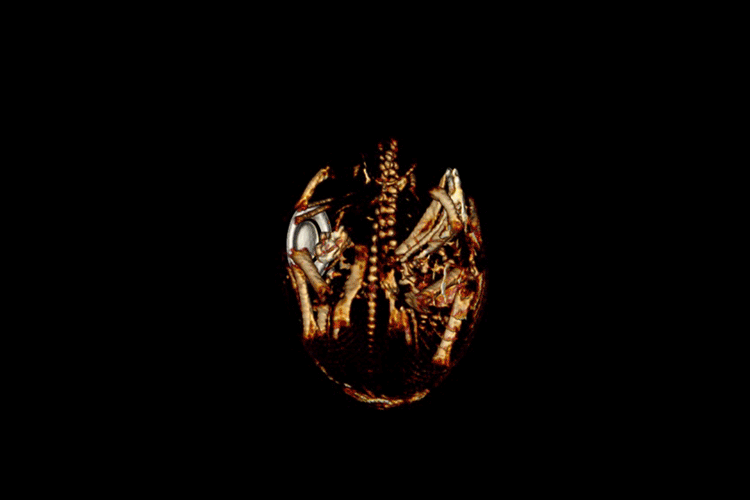
[ad_1]

The 1000-year-old brain of an individual excavated from a churchyard in Ypres, Belgium. The folds of the tissue, which are still soft and wet, are stained orange with iron oxides
Alexandra L. Morton-Hayward
A study of human brains that have been naturally preserved for hundreds or thousands of years has identified 1300 cases where the organs have survived even when all other soft tissues have decomposed. Some of these brains are more than 12,000 years old.
“Brains of this type, where they’re the only soft tissue preserved, have been found in sunken shipwrecks and in waterlogged graves where the bones are just floating,” says Alexandra Morton-Hayward at the University of Oxford. “It’s really, really strange.”
“We’re not expecting a brain to preserve in any type of environment, to be honest,” she says. “If, as an archaeologist, I dig up a grave and I find a brain rattling around in a skull, I would be shocked. But particularly, we’re not expecting soft tissues to preserve in waterlogged environments.”
Morton-Hayward first became interested in brain preservation while working as an undertaker. “The brain is known to be one of the first organs to decompose post-mortem. I saw it liquefy pretty quickly. But I also saw it preserve,” she says.
Many researchers have noted that human brains are found preserved more often than expected and in surprising circumstances, says Morton-Hayward. Now, she and her colleagues have done the first ever systematic study of the phenomenon. They have put together a database of more than 4400 preserved human brains found all over the world.
They have also collected and studied many preserved brains themselves. “I did put one in an MRI machine, which was a terrible mistake. I didn’t realise how much iron was in there,” says Morton-Hayward.
In most cases, the brain preservation could be explained by known processes. For instance, the brains of Incan human sacrifices entombed on top of a volcano in South America around AD 1450 were freeze-dried along with the bodies, says Morton-Hayward.
The bodies and brains of bog people such as Tollund Man, who was hanged and dumped in a bog 2400 years ago in what is now Denmark, were preserved by a tanning process similar to that used for leather.
And saponification, where fatty substances turn into a form of soap called grave wax, preserved the brains of some people shot in 1936 during the Spanish Civil War and buried in a mass grave.
But the known processes preserve all soft tissues, not just brains. They don’t explain the 1300 cases where brains are the only soft tissue to survive.
“This unknown mechanism is completely different,” says Morton-Hayward. “The key feature of it is that we only have the brain and the bones left. There’s no skin, no muscle, no gut.”
For instance, Saint Hedwig of Silesia was buried in Poland in 1243. When her body was exhumed in the 17th century, her brain was found to be preserved, which at the time was attributed to divine power.

Alexandra Morton-Hayward holding a 1000-year-old preserved brain
Graham Poulter
Morton-Hayward’s working hypothesis is that, in certain circumstances, substances such as iron can catalyse the formation of cross-links between proteins and lipids, forming more stable molecules that resist degradation. The nature of the proteins and lipids found in brains, or their ratio, might be the key.
“The mechanisms are similar to those that we see in neurodegenerative diseases, like dementia,” she says. “So if we can figure out what’s happening to brains after death, we might be able to shed some light on what’s happening in brain ageing in life as well.”
“It is fantastic news that the data is being published,” says Brittany Moller at James Cook University in Melbourne, Australia, one of the researchers who has found that brain preservation is more common than thought. “It may increase awareness among researchers of the likely potential for brain material preservation,” she says.
That is important because preserved brains often have the same colour as surrounding soil. “It is therefore highly likely that brain material is frequently discarded during archaeological excavation as it is not recognised for what it is,” says Moller.
While the study focused on human brains, the findings should apply to animals too. There are at least 700 instances of animal brains preserved in fossils, says Morton-Hayward, with the oldest being arthropods that are half a billion years old.
Topics:
Source link




